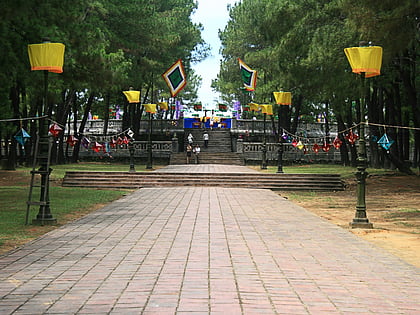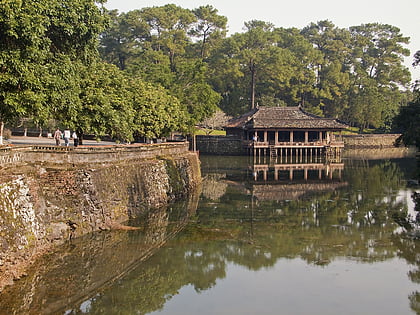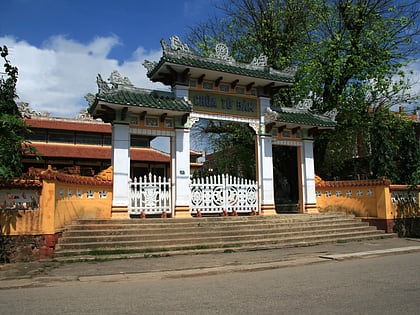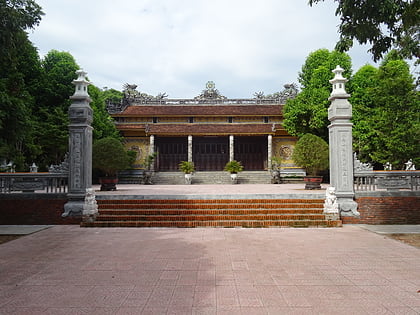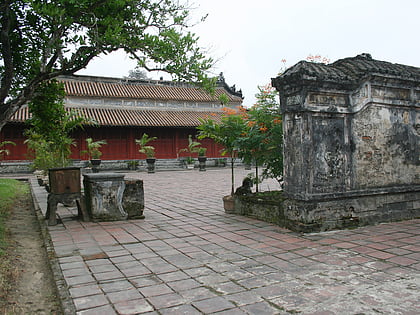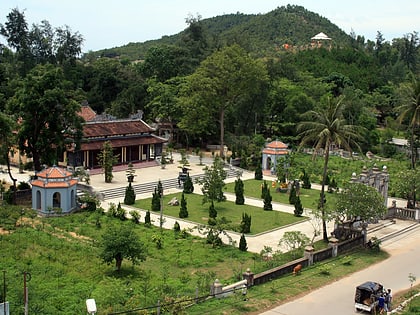Nam Giao, Hue
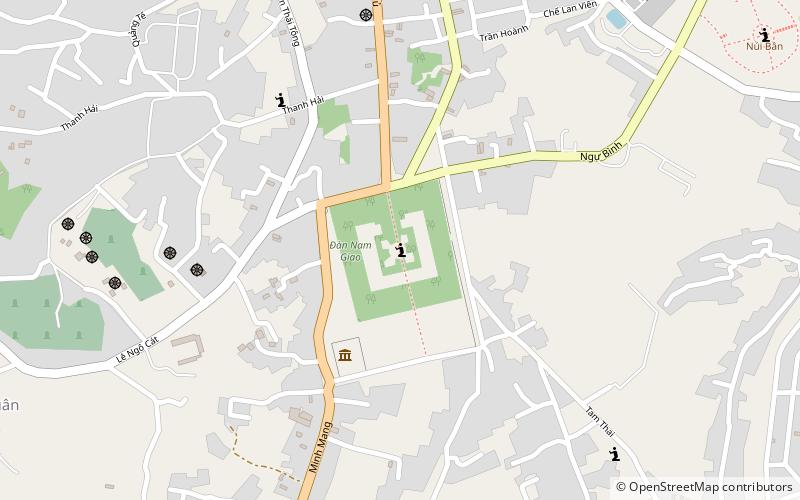

Facts and practical information
Nestled in the heart of Hue, Vietnam, the Nam Giao Esplanade is a historic site steeped in cultural significance. This ancient platform, also known as the Esplanade of Sacrifice to the Heaven and Earth, was once central to imperial ceremonies conducted by the Nguyen Dynasty, who ruled from 1802 to 1945.
The esplanade is a tiered, altar-like structure located in a tranquil setting, surrounded by lush greenery that adds to its serene atmosphere. The design of the Nam Giao Esplanade is deeply symbolic, reflecting the connection between the emperor and the cosmos. The emperor would perform elaborate rituals here, offering sacrifices to Heaven and Earth in the hopes of ensuring peace and prosperity for the nation.
Built in 1806 under the reign of Emperor Gia Long, the first emperor of the Nguyen Dynasty, the Nam Giao Esplanade reflects a blend of Confucian philosophy and Vietnamese tradition. The esplanade's layout is unique, consisting of three terraces that represent the three forces of the universe: Heaven, Earth, and Humankind. The topmost terrace, circular in shape, symbolizes Heaven; the middle square terrace represents Earth; and the bottom terrace, also square, stands for Humankind.
Throughout the years, the Nam Giao Esplanade has withstood the tests of time and conflict, including the Vietnam War. Although it has experienced some degradation, efforts have been made to preserve this historical site, which continues to be of great interest to scholars and tourists alike.
Today, visitors to Hue can explore the Nam Giao Esplanade and immerse themselves in the history of Vietnam's last feudal dynasty. The site is not only a testament to the nation's imperial past but also a place of contemplation and reverence for the enduring spirit of Vietnamese culture.
Hue
Nam Giao – popular in the area (distance from the attraction)
Nearby attractions include: Tomb of Tu Duc, Từ Đàm Pagoda, Báo Quốc Pagoda, Tomb of Dục Đức.
